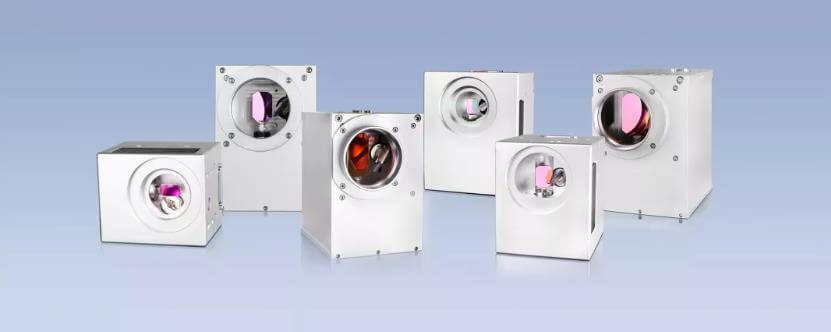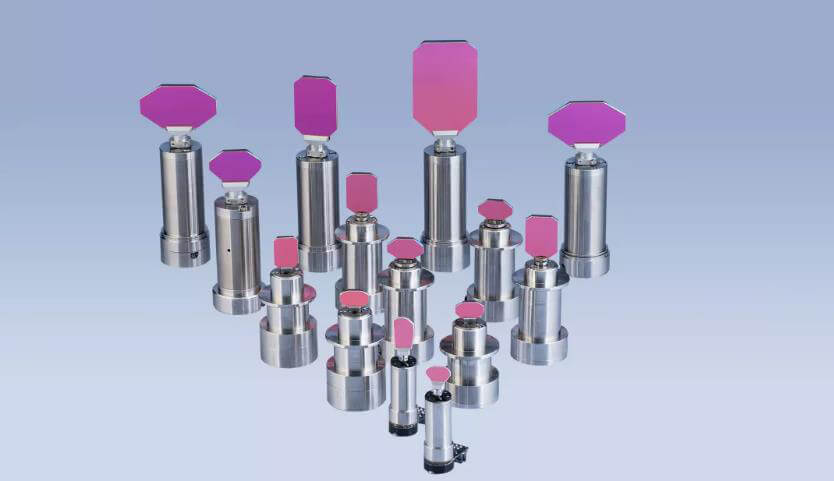Since 1995, the laser marking industry has seen advances in large format systems, rotating mirror systems and vibrating mirror systems. The control mode has also evolved from direct software control to computer top and bottom control for real-time processing and time-sharing reuse.
Nowadays, the emergence of semiconductor lasers, fiber lasers and ultraviolet lasers presents new challenges for the control of optical processes.
The latest product in the field is the galvanometer laser marking head (galvanometer scanning system).
The large-scale application of galvanometer scanning systems in China began in 1998. The galvanometer, also known as the ammeter, is designed based on the same principles as an ammeter.
Instead of a needle, the galvanometer uses a lens, and the computer-controlled DC signal of -5V to +5V or -10V to +10V replaces the probe signal to perform the desired action.
Just like the rotating mirror scanning system, this control system uses a pair of retractable mirrors. The difference is that the stepper motor that drives the lens has been replaced by a servo motor. Additionally, the use of a position sensor and negative feedback loop design further enhances system accuracy, leading to improved scanning speed and repeatable positioning accuracy.

Galvanometer Scan Marking
The galvanometer scanning marking head is mainly composed of an XY scanning mirror, a field mirror, a galvanometer and computer-controlled marking software. Appropriate optical components are selected based on the laser wavelength. The system may also include a laser beam expander and a laser.
The working principle of the Galvanometer Scanning Marking Head involves laser beams incident on two scanning mirrors, whose reflection angles are controlled by a computer. These two mirrors can scan along the X and Y axes respectively, resulting in deflection of the laser beam and movement of the laser focus with a specific power density on the marking material. This leaves permanent marks on the surface of the material.
The focused point can be circular or rectangular. The galvanometer scanning system can be used for vector graphics and text and uses the graphic processing method of computer graphics software. This method features high drawing efficiency, accurate and distortion-free graphics, improving the quality and speed of laser marking.
In addition, galvanometer marking can also adopt dot matrix marking method, making it suitable for online marking. Depending on the speed of the production line, one or two scanning galvanometers can be used. Compared with matrix marking, the matrix information that can be marked is more extensive, making it ideal for marking Chinese characters.
Galvanometer sweep marking head has become a popular product due to its wide range of applications, vector and matrix marking capabilities, adjustable marking range, fast response speed, high marking speed (marking hundreds of characters per second ), high marking quality, strong optical path sealing performance and adaptability to various environments. It is considered the future of laser marking and has significant application prospects.
laser marking head
The double-head marking head (also known as double-head marking head) consists of two scanning heads.
As soon as a laser beam enters the marking head, it is split into two laser beams through optical combining.
Special dual-head marking software controls each of the two heads separately.
Its marking efficiency is twice that of a single head, and the marking area is also twice as large.
It is especially suitable for applications that require quick marking of large areas.
The technical specifications of the double-head model are the same as the single-head model, with the exception of a double marking area.
For example, if the marking area of the single-head model is 100x100mm, the corresponding double-head model will have a marking area of 200x100mm.
o optical elements
We carefully optimize and troubleshoot all optical components to ensure optimal focus quality and stable processing parameters.
Our optical products feature objective lenses of compact design, including an adapter for standard objective lenses, as well as optical components with varying wavelengths, power densities, focal lengths and fields of view.
Digital Laser Marking Head
Compared with traditional analog marking heads, digital marking heads have notable advantages such as compact size, fast scanning speed and robust interference resistance.
They are mainly used in optical fiber laser marking machines, end-pumped solid laser marking machines and flying laser marking machines.

Digital Header Features
- Compared with traditional online inkjet methods, online laser marking has the benefits of faster speed (up to 100M/min), higher efficiency, exceptional anti-counterfeiting capabilities, compliance with European environmental protection standards and significantly reduced operating costs.
- The flight marking head can be combined with multiple lasers to create a flight laser marking machine.
- This technology has the advantages of ease of use, a wide range of applications and suitability for marking on different materials.
Application Industry
The laser flight marking machine produced using the flight marking head has a wide range of applications in industries such as medicine, personal care products, tobacco, food and beverage packaging, alcohol, dairy, clothing accessories, leather, electronic components, chemical building materials, and more. It can also be used to mark up graphics and text such as expiration dates, batch numbers, shift information, manufacturer names and logos.
This machine is suitable for online marking on a variety of materials, including paper packaging, leather, acrylic, plastic resin, bamboo and wood products, coated metal and PCB boards.
Typical application
Laser processes including drilling, cutting and welding, deep engraving, rapid prototyping, rapid processing, microstructuring and 3D part processing.
Working principle
During the scanning process in a laser galvanometer, the diverging lens within the device is moved relative to the focusing lens by a motor, enabling dynamic and precise positioning along the optical axis.
This movement modifies the overall focal length of the system, working in sync with the scanning deflection lens, expanding the two-dimensional scan into a three-dimensional scanning system.
The device can replace expensive flat-field objective lenses in two-dimensional scanning applications and also enable three-dimensional beam deflection scanning systems.

























































